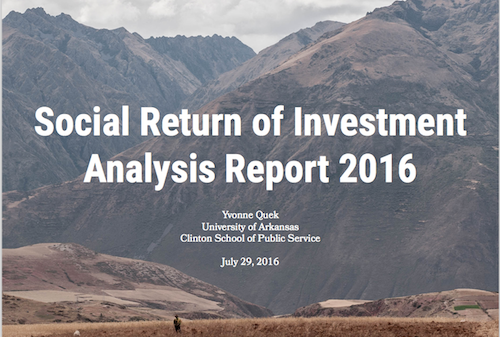This report shares findings on the social and economic value created by Awamaki in 2015 through its women’s cooperative program and sustainable tourism program implemented in five different communities located around the Scared Valley in Cusco, Peru. Founded in 2009, Awamaki is a non-profit social enterprise dedicated to empowering rural artisan women through market access and skills-development capacity building. This evaluative Social Return of Investment (SROI) analysis was conducted in June 2016 by a graduate student researcher from the University of Arkansas Clinton School of Public School. By applying SROI analysis, this study aims to measure, in quantitative terms, the social and economic value generated by the organization in 2015. Of note, Anne Marie Toccket previously conducted an evaluative SROI analysis in 2010. Anne Marie works as a current staff member on Awamaki U.S., a 501(c)(3) non-profit organization registered in United States of America as Awamaki’s sister organization. The former SROI analysis focused solely on Awamaki’s impact on a single weaving cooperative in Patacancha. Since then, Awamaki has expanded to work with another cooperative in Patacancha and four other different cooperatives in the Sacred Valley. This evaluative SROI measures the impact of Awamaki on the women in five different communities as well as other stakeholders who directly benefit from the sustainable tourism activities. In 2015, Awamaki worked with 148 women in its women’s cooperative program, 22 homestay families, 5 Spanish teachers, 5 local artisans, tourists and volunteers. This report sets out the changes experienced by these stakeholders in the Ollantaytambo district of Cusco and calculates the monetary value of these changes.18 outcomes were monetized and included in the SROI analysis. The results of this study showed that for every dollar invested into Awamaki, the organization generates a social and economic value of $1.20. In addition, for every dollar invested in the women’s cooperative program, it generates a social and economic value of $1.55.
